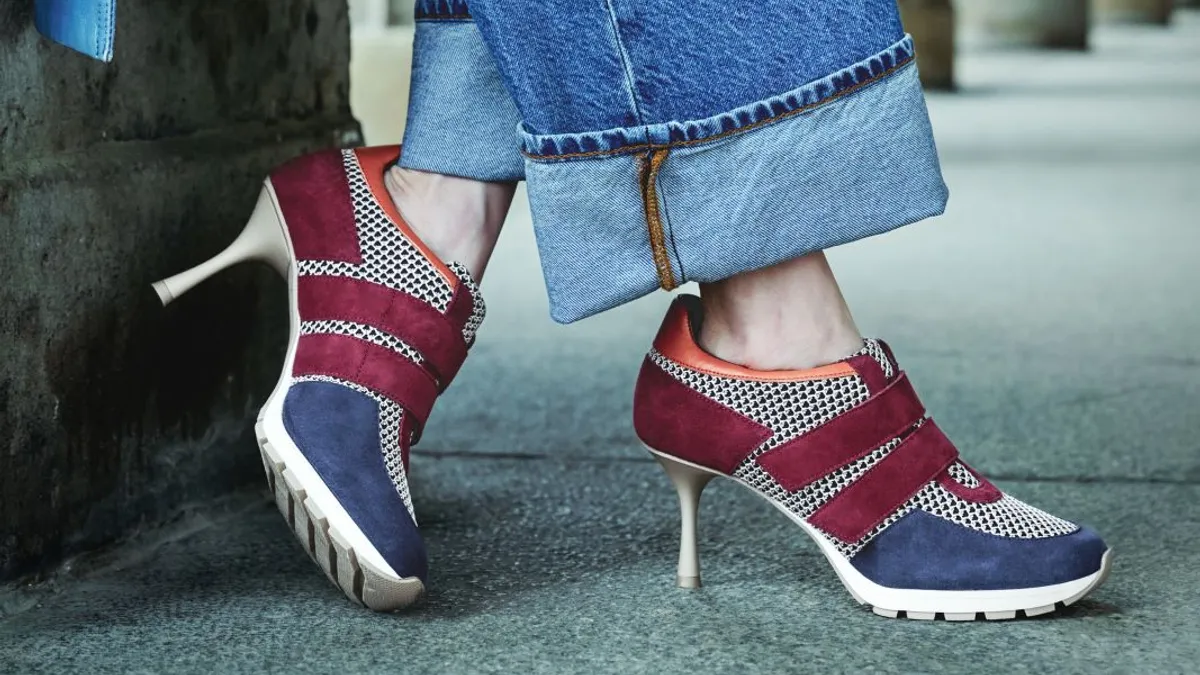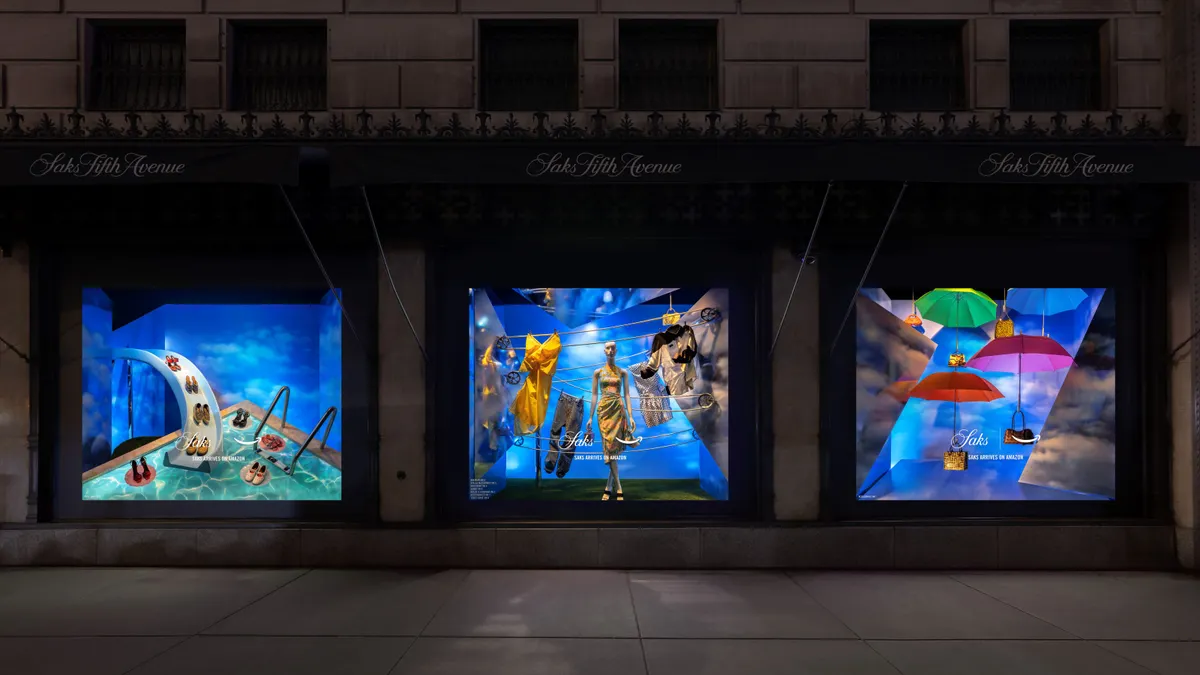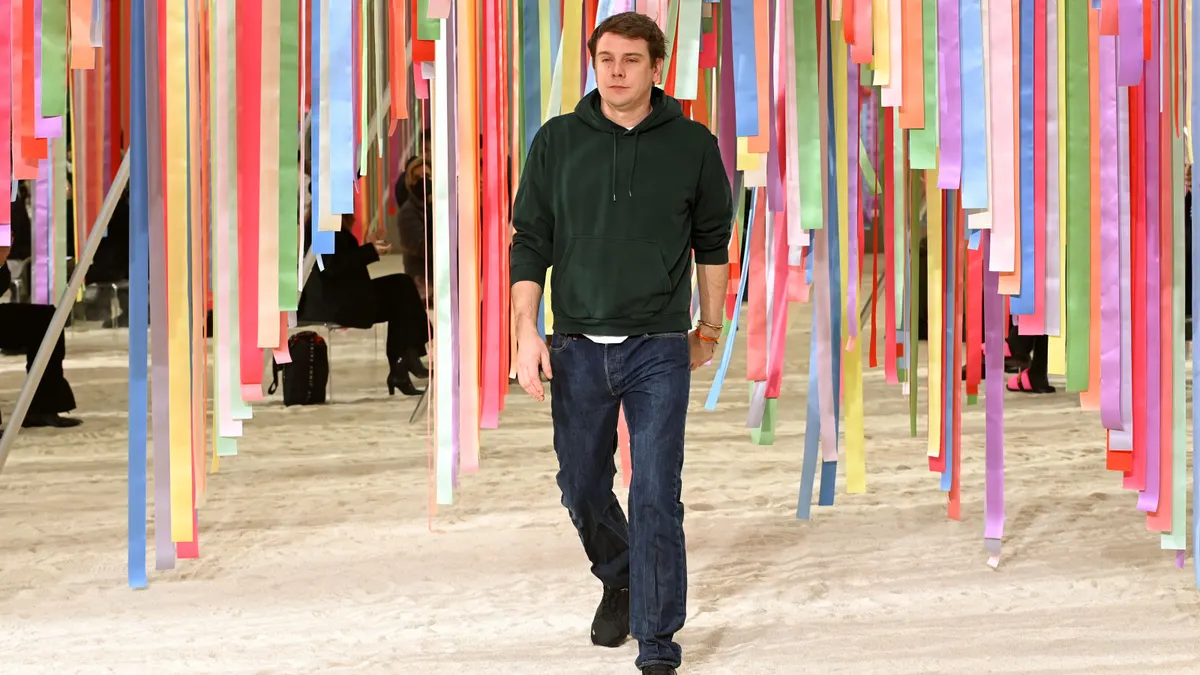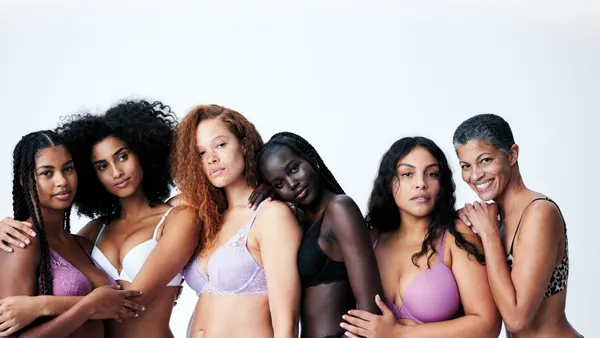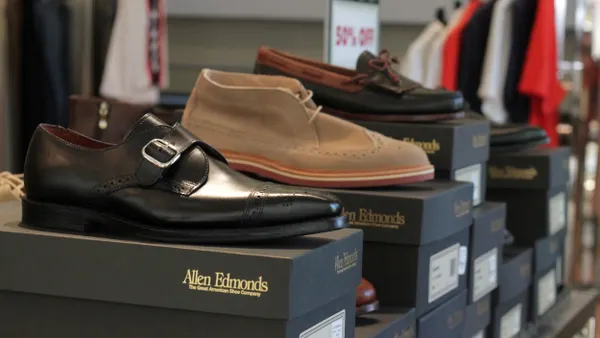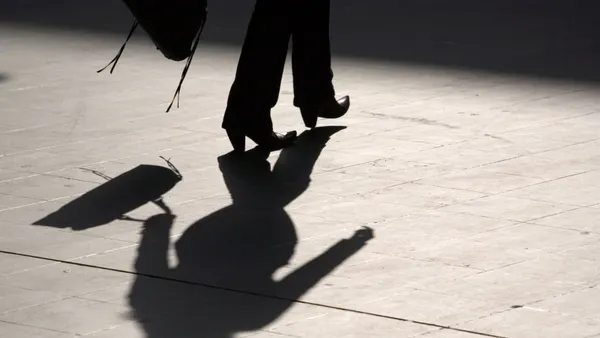Dive Brief:
- The U.S. Patent and Trademark Office rejected a trademark application from Spanx Founder Sara Blakely’s new footwear line Sneex.
- Sneex sought trademark protection for the word “Sneex,” stylized for footwear, hats, socks and other apparel. It additionally sought to protect the phrase for e-commerce and retail stores as well as fashion consulting services.
- The USPTO said the request was too similar to an already registered trademark, “Sneak,” which is owned by Sneak Energy Limited and appears on clothing, footwear and hats.
Dive Insight:
Blakely founded Sneex in 2024. The company makes shoes that are a hybrid of a high heel and sneakers and are designed to be more comfortable high-heeled footwear.
The USPTO blocks trademark registration when a trademark is “so similar to a registered mark that it is likely consumers would be confused, mistaken or deceived” about the source of the goods.
“Sneex” and “Sneak” may be confusingly similar in appearance and where they appear, creating an overall commercial impression, said Bridget Watson, the examining attorney on the case, in the filing.
“The marks only differ by the ending sound in the marks, where applicant's mark sounds like the plural version of registrant's mark,” Watson said. “As such, it appears that [the] applicant's mark is an intentional misspelling of the phonetic plural of the registered mark. Accordingly, this difference does not obviate the similarity between the marks. Slight differences in the sound of similar marks will not avoid a likelihood of confusion.”
Watson also pointed to the phrase Sneex as being “merely descriptive” of the product. Since Sneex refers to sneakers, the word “immediately conveys to consumers that applicant’s goods include shoes” and its retail store features shoes.
A Sneex spokesperson didn’t immediately respond to a request for comment.
The USPTO’s response was filed on Feb. 18, and Sneex has three months from the issue date to respond or risk abandoning the application. Applicants can also request an extension of time for a fee.
The rejection presents a challenge, but it’s not insurmountable, said Josh Gerben, trademark attorney for Gerben IP, in a blog post.
Gerben suggested that examining Sneak’s use of the trademark on clothing could determine whether it is in the context of “ornamental use” and not establish a trademark right for clothing.
“If the company’s clothing items simply feature the brand name in large print on the front of shirts and hoodies (and the trademark does not appear on labeling, tagging, or packaging), this would be considered only an ‘ornamental use,’” Gerben wrote.
The rejection based on the grounds of similarity could also be avoided if Sneak told the USPTO it was OK with the Sneex mark being registered, per Gerben.
The phonetic spelling of Sneex could also help the brand avoid a “merely descriptive” rejection, because the spelling doesn’t directly correspond to an English word, and the brand name’s use could be defined as suggestive rather than descriptive, Gerben said.
“Ultimately, the products are not sneakers but heels,” Gerben said. “Consumers must make an additional cognitive leap to connect the name to the actual product.”



